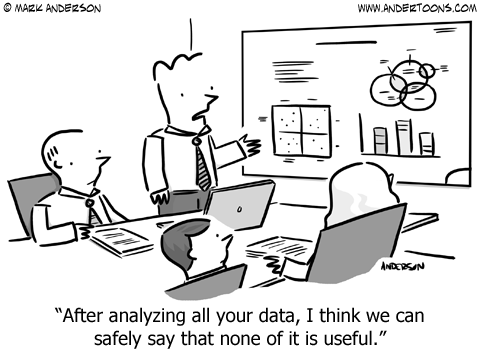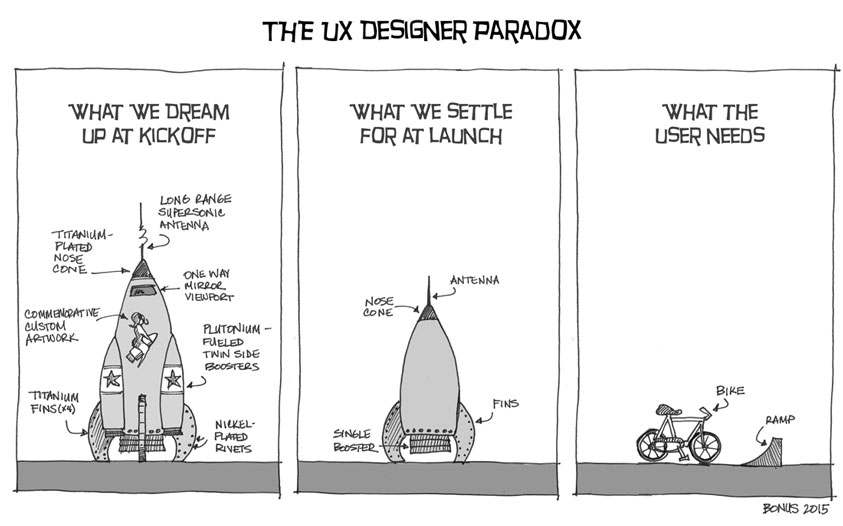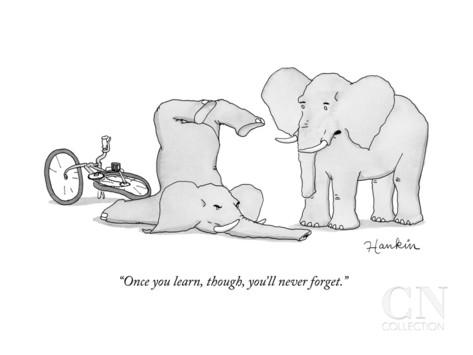Using Data As Part Of A User Centred Design Process
The Definition. User-centered design (UCD) is a framework of processes (not restricted to interfaces or technologies) in which the needs, wants, and limitations of end users of a product, service or process are given extensive attention at each stage of the design process.
When I started out as a web designer, I had no real understanding of what user experience design (UXD) meant, or even that it existed as a term. I was led into the industry through my passion for both e-commerce and graphic design.
As an entry level designer I realised I spent all my time diving into analytics to discover what I could about users of the site. I was really trying my hardest to undertake UX design without even realising I was doing so.
As my career has progressed I managed to move a lot closer to UX design and begun to undertake user testing as part of my design process. This is where my fascination with UXD & UCD really began and where I started to understand that analytics data can only be fully understood when the user provides context and true qualitative insight.
In this article I want to share a few things I’ve learnt along the way into how to use both the web analytics and user testing data throughout the design process and as part of continuous learning and improvement cycle to create the best possible products for your customers.
The Quantitative Insight
Quantitative insight can be gained by using analytics in the form of statistics, figures and reports to collate trends and patterns on user behaviour. Data leaves assumptions behind and provides us with facts.
In God We Trust, all Others Must Bring Data. W. Edwards Deming
Data is insightful. All data however, needs context and needs to be validated with qualitative insight, from your users. You can collect all the data in the world, but in the wrong hands, assumptions will be made and you won’t know what to do with it.

Data is like garbage. You’d better know what you are going to do with it before you collect it. Mark Twain
Diving into the analytics and quantitative research can often be a can of worms and will more than likely throw up more questions than you get answers. It’s important to try to stick to the specifics and try to focus on certain areas that are of the most significance.

The data you hold will then be more actionable and you will be able to use your findings to make decisions and to influence design.
Facts Do Not Cease To Exist Because They Are Ignored. Aldous Huxley
You cannot ignore data. Data rings true, it can help you get your point across. It can prove right or wrong and can enable you to be able to act upon your findings.
With the above said, it’s important to communicate data in a simple and understandable way to effectively to help get your point across to different areas of the business and senior stakeholders. When doing so however, the importance of backing up this qualitative insight with input from users must be stressed, the what must be framed with the why.

It’s important to balance between the quantitative data you have collected and use qualitative data through user centric research to not only validate your findings but to also either reinforce them or prove them wrong.
The Qualitative Insight
Qualitative insight is the best way to creating user centric designs and can be gained through many varying methods of data capture. There really is no substitute for one on one time with your users, however user testing doesn’t need to be so costly of time, money or resource. Insight can be gained through remote, online user testing, gaining voice of customer insight through surveys and questionnaires and so on.
You Are Not Your User And You Cannot Think Like A User Unless You’re Meeting Users Regularly. Leisa Reichelt
Having been involved in many user testing sessions both in-person and remote I have never once failed to be completely surprised by something that is said or done. Users will always be completely irrational and highlight problems, it’s all part of the test and learn cycle.

No matter how much user testing you do, you will never fail to be surprised, however you will also never be able to answer every single question or cater for all users. It’s important to stick to what’s most important for you, whether that be designing for personas or answering specific questions.
Not Everything That Can Be Counted Counts, And Not Everything That Counts Can Be Counted. Albert Einstein
Qualitative user research techniques provide invaluable insight that go far beyond the analytics. It’s important to test and validate at every stage of the design process. Then to continue to iterate and re-evaluate once a product has been shipped. Your first solution will almost certainly not be your final solution.

When People Talk, Listen Completely. Ernest Hemingway
One of the best pieces of advice I’ve ever heard used in the context of conducting user research is the above quote. No matter how proud or attached you are to a design, forget it, it’s useless unless you listen to the voice of the customer. Listen to their feedback and understand it to be able to shape your design progressively.

In Conclusion…
I’ve only scratched the surface here, although hopefully that has shared some insight. Using data can highlight the importance of key issues and can provide key insights. You can use it to influence and shape your designs. Though you must always ensure you are testing and validating with your users. Although you will never be able to design to suit the needs of every user, you should use personas and key demographics to help you target your designs. Once your product is live you must implement data and user research as part of a continuous test and learn cycle to keep improving and learning about your product.
Data for Design was originally published in uxdesign.cc – User Experience Design on Medium, where people are continuing the conversation by highlighting and responding to this story.
from uxdesign.cc – User Experience Design – Medium https://uxdesign.cc/data-for-design-f33fd7419cc8?source=rss—-138adf9c44c—4
